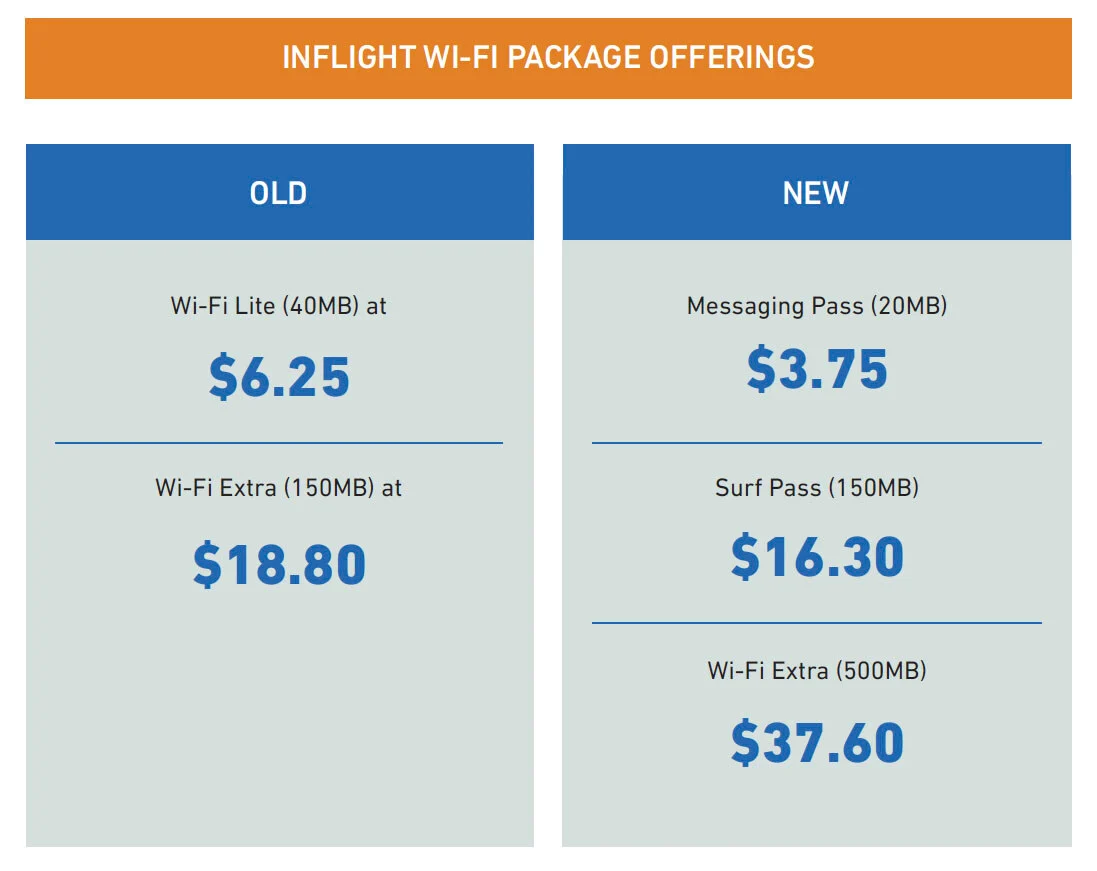
Why In-Flight Wi-Fi and Mobile Are Better Together
As a provider of both services, we wanted to know what passengers actually use when in-flight—so we studied two years’ worth of connectivity data. Through this exercise, we were able to identify a reoccurring trend: when you provide Wi-Fi alongside a mobile service on the same aircraft, you will maximize take rates and get more passengers connected.
Company Profile
Demand for high-speed in-flight connectivity is growing rapidly as more passengers fly with personal electronic devices or PEDs. Many airlines are struggling to keep their text and Wi-Fi packages current and in line with how travelers use the internet.
This Global European airline tapped Panasonic Avionics to reorganize its in-flight Wi-Fi packages. Panasonic used a smart analytics-based approach to find the best possible combination of Wi-Fi service offers, which led the airline to better align itself with its customer demand.

Section Title
-
The Challenge
This airline operates a number of long transoceanic routes. Passengers were eager to buy in-flight Wi-Fi to entertain them on these long flights. The main problem was, the packages available were not suitable for the duration of their flights.
Ultimately, most of the customers who bought Wi-Fi packages kept maxing out on their allowable data and had to keep repurchasing packages. This was a frequent source of friction and customer dissatisfaction, giving the airline’s connectivity product a low net promoter score (NPS).
-
Panasonic’s Approach
Two Panasonic teams—Global Advanced Analytics and Consumer Marketing—came together to deliver a data-forward approach to solving this airline’s problem. The teams looked at two years of historical data, involving each session the airline sold on each of its aircraft that use the Panasonic Avionics network.
By using advanced statistical modeling, willingness to spend analysis, price sensitivity analysis, and global market analysis, they devised a new suite of Wi-Fi offerings airline customers would be most likely to buy.
-
The Solution
Based on the analysis of passenger behaviors and Panasonic’s recommendations, the airline reconfigured the data allowance and price points of its in-flight Wi-Fi packages.
The new better-defined offering allowed passengers to choose the package most suitable to their needs creating a more seamless experience. Passengers were able to stay online longer without having to keep repurchasing packages to achieve what they wanted to do.

How We Implemented It
Panasonic worked with the airline’s in-flight services and analytics teams to agree on the final product mix. We then coordinated with the airline’s wireless internet service provider (WISP) to implement price changes.
Panasonic’s Wi-Fi pricing recommendation was implemented across the airline’s entire fleet—including on aircraft where the connectivity was managed by a competing Wi-Fi provider.
Worked with the airline and within Panasonic to develop a marketing plan to communicate and promote the new offerings.
The Results
-
Increased RevenueAfter monitoring the performance of the new Wi-Fi packages for a year after the implementation took place, the airline saw a 30% increase in Wi-Fi revenues.
-
Desired usageThe average price sold is higher as customers increasingly choose packages that reflect their desired usage, not their minimum usage.
-
Less ComplaintsCustomer complaint volumes fell and package repurchase rates dropped.